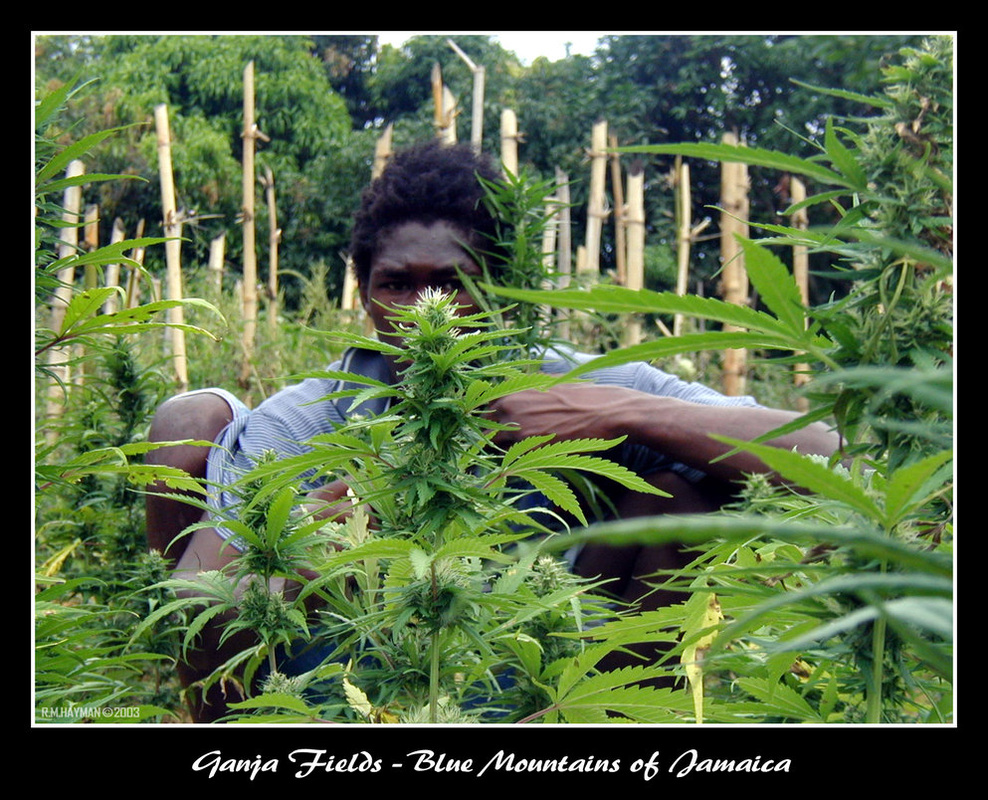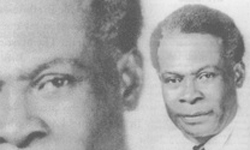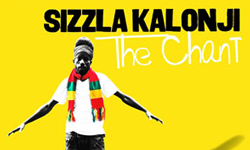|
This is a long read so we suggest you light one up, relax and enlighten yourself..... Pre-10,000 BCE Archaeologists all agree that hemp was one of the first known plant species to be purposely cultivated and the only one cultivated to be dioecious (having separate male and female plants). The origin of hemp is thought to be in Central Asia (Kazakstan, Pakistan, Nepal, the Kashmir region of India, and the Tibetan region of China) -- two regions in particular: in the Mesopotamian Valley between the Tigris and Euphrates Rivers (present day Iraq) and, at the same time, in the Huang He (Yellow River) valley in China. 8,000 BCE One of the oldest archaeological relics in existence has been dated to this time period. A fragment of hemp cloth was found at Catal.Hüyük (what is now Turkey). 6,000 BCE Tibetans domesticate Cannabis sativa and use it for making string and cloth. This was likely invented by females since the development is virtually simultaneous with the invention of heddles (the parallel cords used to guide warp threads in a loom). Tibetans still use hempseed in buttered tea. 5,500 BCE Documentation reveals that the first known cultivated hemp crop in Japan occurred during the Jomon period. Emperors have always worn hemp clothes made by the Imperial Shikoku family in a ceremony called Daijosai. Archaeological evidence of hemp seeds was unearthed in Eisenberg, Thuringia (currently Germany) and dated to this time period. 3,700 BCE Pen Tsao, a Chinese medical book is written by the Emperor Chen Nung, who classifies hemp as one of the “Superior Elixirs of Immortality”. Even today, Chinese herbalists often prescribe hemp seeds to nourish the yin (feminine), constipation in the elderly, “blood deficiencies”, and during recuperation from febrile diseases. In Chinese medicine, hemp seeds fall under the categories of sweet, neutral, and clearing heat, operating through the channels of the stomach, large intestine, and the spleen. 2,350 BCE The Shu Kin has several instructions regarding hemp. 1,600 BCE In China, the oldest agricultural treatise is the Xia Xiao Zheng and thought to have been written around this time period. It names hemp as one of the main crops that grew -- along with millet, wheat, beans, and rice. The Chinese developed hemp into scrolls, which also brought about the world’s first paper industry. 1500 BCE Scythians cultivate hemp for fine linen. 1000 BCE Records from a Chou Dynasty state banquet show that boiled hemp seeds were served in cereal dishes. The oldest remnants of fabric are made from hemp and come from a burial site in China dated to this time period. Long before this time though, the Chinese had discovered that twisting the strands made it stronger, which led to the discovery of spinning and weaving fibers into cloth. This ended the reliance on animal skins as the sole material for clothing. The ancient Chinese also used hemp for making shoes. 800 BCE Hemp seeds discovered at the ancient Scythian city of Tractemino have been dated to this time period. The Scythians were also known to leave hemp seeds at royal tombs as offerings. 500 BCE A Scythian couple dies and are buried with two small tents covering censers. Attached to one tent stick is a decorated leather pouch containing hemp seeds. (This gravesite was discovered in the late 1940s in an area called Pazryk, which is in the Tien Shan Mountains in modern-day Khazakstan). The Scythians introduce hemp to northern Europe. An urn containing hemp leaves and seeds was found near Berlin and dated to this time period. 400 BCE The Greek historian, Herodotus (484-425 BCE), extolled hemp’s virtues in his Histories and reports the use of hemp in the manufacture of linen among the Scythians and the Thracians. Hemp ropes and fabrics, found near Stuttgart, Germany, are dated to this time period. 300 BCE The Altai nomads of northern Russia cultivated early hemp crops and used it as a food source rather than a fiber crop. They relied mainly on the oil but the concentrated hemp protein made it a valuable food that was also relatively easy to transport. In China, practises of the traditional belief system called Wu Fu begin. Wu Fu literally means “Five Clothes” or the Five Levels of Mourning. All levels involve hemp and embodies the belief that all people are expected to conform, especially when it involved the patriarch of the family. Such conformities depended on how closely one was related to the departed. It also prescribed punishments for those who failed to follow the prescribed rituals. For instance, if the departed was a father or husband (the first level and closest one), the survivor was expected to wear coarse, unhemmed hemp clothing, hemp sandals, hemp head-dress, and carry a hemp stalk for 27 months. The punishment for non-compliance is not stated, but it was likely severe. The second level involved the passing of a grandfather, brother, or direct uncle. These relatives were expected to to wear coarse hemmed hemp clothing, hemp head-dress, hemp sandals, and carry a hemp mourning staff for one year. At the fifth level, for a distant uncle or in-law, one would wear hemp fabric with a silky finish for three months. White is considered to be the color of mourning, not only in China, but in other Asian countries as well. Even today, family and friends will wear white hemp fabric collars during mourning. 221-207 BCE The Li Qui, an early Chinese manuscript of social ritual, describes hemp as one of the “five grains” of China. The others included barley, rice, wheat, and soybeans. 140-87 BCE A paper sample, discovered near Xian in China, is dated to this time period. It contains hemp fibers and is probably the oldest paper in the world. This fragment was likely produced with a floating sieve, from which the dip sieve was developed. Eventually, the bast fibers from the mulberry tree became the most important raw material for paper. Common Era (CE) To 100 CE Ayurvedic physicians used hemp seeds to treat dozens of diseases and medical problems. The Greek physician Pedacius Dioscorides (c.40-90) describes and extols the medicinal benefits of hemp seeds, including the use of hempseed juice (oil) as a remedy for earaches, as well as using hemp seeds for food. His work, De Materia Medica, is still one of today’s most authoritative herbal and pharmacological information resources. Dioscorides is also the one who gave the plant its botanical name. Another physician, Pliny the Elder, suggests using hempseed juice (oil) to expel insects and worms from the ear and to relieve constipation in farm animals. The seed also was prescribed as a remedy for gout. Chinese surgeon Hua T’o makes an effective anesthetic from hempseed and wine, which was used during difficult abdominal surgeries. In early CE centuries in Europe, it was common to use hemp seed oil as an analgesic for earaches and for expelling insects from inside the ear. Galen (c. +129-199), a noted physician and philosopher, believed that gout was caused by overindulgence and found that the hemp seed was useful in treating this painful disease. Pliny the Elder (+ 23-79) prescribed infusion of hemp root to ease the inflamed joints of gout sufferers. Pliny was also the first to prescribe hemp seed as a laxative for farm animals. 200 CE Hemp is now well established in Japan and Korea. A coastal Japanese cave painting depicts tall hemp plants, waves, horses, and strangely dressed people. The Japanese word for hemp is written using the kanji character, signifying its Chinese origin. Hemp became a staple fiber for clothing as well as for specialized purposes like eel fish lines, the high wooden sandal straps, and fine paper. It was also a focus in the rituals of Shinto where it symbolized purity and fertility. The ancient shrine at Taimdo (near Osaka) literally means “hemp shrine”. In Shinto and Buddhist temples, certain symbolic objects are made of hemp: bell ropes, purification wands, curtains, priests’ robes etc. Zen scholars and samurai warriors express hemp's inspiration in poetry and traditional arts, including the martial art of aikido. Although trade and communication faded among Japan, China, and Korea over the next few centuries, Japanese scholars continued to travel to China to study science, medicine, and agriculture, where they learned to administer hemp preparations for many ailments in both humans and animals. The high resale value of hemp brought economic strength and power to feudal shoguns of Japan while keeping the humble farmer busy with labor-intensive production. The hemp leaf became a common motif in Japanese fabric and still appears on modern quilts, kimonos, and noren curtains. Apart from silk for the wealthy, hemp remained the primary clothing fiber in Japan until the 17th century when cotton was introduced. Hemp fabric was then reserved for specialty garments and the upper class. However, despite its diminished roll in clothing, hemp continued as the dominant raw material in other practical applications through the 19th century. Rural Japanese blended hemp fiber with seaweed, broom straw, and other plants to make conical snow hats and packboards for transporting heavy loads over moutainous terrains. In Japan, as well as in Europe, the military relied on hemp ropes and sails. 574 CE Medieval times begin and dishes of roasted hemp seeds are popular with many cultures, including the Jews. 700 CE In Europe, the oldest written reference to hemp is found in Charlemagne’s “Capitulare de Villis” (c.795). 800 CE Charles the Great proclaims a law mandating that hemp must be cultivated in his empire. The Chinese art of paper-making then reaches Persia and Arabia. Because hemp paper lasts longer than that made from wood fibers, the writings of Confucius and Lao Tzu were still available many centuries later. 900 CE The treatise Anandakanda describe 50 preparations for cures and rejuvenation. Both the ancient Ayurvedic system and the Arabic Unani Tibbi system of medicine used hemp seeds for healing a variety of ailments. Hemp seeds were usually mixed with other vegetable, mineral, and animals substances to neurtalize any narcotic effects while enhancing the therapeutic powers. 1150 CE Hildegard von Bingen includes the medicinal properties of hemp, among those of other plants, in her medical studies. Moorish Spain is known to have been using hemp products by 1150 and establishing the first paper mill in the West. By the 16th century, the art of paper-making is firmly established in Europe. 1300 CE During the Ming dynasty (1368-1644), a text called Ri Yong Ben Cao (Household Materia Medica) includes hempseed as medicine. The technique of paper production makes its way from the Near East to Italy from where it was distributed throughout the rest of Europe. 1455 CE The publication of the Gutenberg Bible is completed on hemp paper. 1492 CE Christopher Columbus takes hemp seeds with him on his infamous voyage. 1500 CE Hemp is mentioned in virtually every medical book from now until the 20th century. Renaissance artists create their masterpieces on canvases made of hemp. The oil in their paints was often derived from hemp seed and may just explain why these paintings are still in pristine condition after all these years. Henry VIII (1491-1547) is the first English monarch to go out of his way to encourage the cultivation of hemp for rope fiber. As the importance of England’s navy grew, so does the official sponsorship of hemp growing. Other countries that soon follow these examples are France, Spain, and Holland. For the next 200 years, hemp and flax dominate the fiber crops of Asia, Europe, and North America. Trading ships from all over the world, including those who brought the first explorers and settlers to the Americas, are outfitted with ropes and sails made from hemp. The British navy, known for its superiority, required vast quantities of hemp fiber to keep its vessels swift. 1600 CE The farmers of Acadia, along Canada’s Atlantic coast, had been growing hemp since 1606, and kept the French navy supplied until the British expelled them to Louisiana in 1755 where their descendants, the Mississippi Delta ‘Cajuns’, would be among the first Americans to embrance marijuana smoking.English colonists bring hemp to Virginia in 1611 but, despite the opposition of King James I, neglect the crop for the more profitable drug – tobacco. Nicholas Culpepper (1616-1654) describes his medicinal uses for hemp seeds. The Pilgrims bring seeds with them to New England in 1628 but are reluctant hemp growers. Nevertheless, they establishlarge hemp farms outside of Salem. By 1630, the first hemp rope processing plant, called a ropewalk, is opened in Boston. A second, much large one, operated by John Harrison, a rope-maker from Salisbury, is built at the foot of Summer Street. It was to become one of the city’s most important employers and a focus of discontent that would contribute to the local desire for independence from Great Britain. Within a few years, Boston had dozens of ropewalks. The demand for hemp is so high that Boston rope-makers have to import tons of hemp from Eastern Europe, via England and Scotland. Because of hemp, some towns in New England double in size every year between 1630 and 1650. Even though colonial farmers were not always enthusiastic hemp growers, they were expected to supply hemp rope for the ships of their masters in England and France. Since hemp growing is so labor-intensive, landowners have difficulty finding enough workers to grow and process the crops. Consequently, wages are relatively high, as are food prices. Cattle sell for five times the amount that farmers receive in England for the same animals. During times of war, speculators drive up the price of food to incredible heights, and naval blockades sometimes cut off supplies from the mother countries. Famine was always a possibility, especially in the young cities. Therefore, it simply are not worth the effort to clear land and pay workers to grow a crop, like hemp, that have such a low profit margin. Consequently, colonial governments alternate between using carrots and sticks to make farmers grow hemp. Bibles and maps are printed on hemp paper. Some of the oil needed for lamps comes from the hemp seed. The high value placed on hemp fosters an early recycling industry which converts old clothing, rags, ropes, and sails into paper. Hemp is so vital commercially that in 1640, the governor of Connecticut declares that every resident of the colony must grow hemp. In 1671, to stimulate hemp production and reduce imports, the Colony of Maryland offers local growers one pound of tobacco for every pound of hemp they grow. Taxes can even be paid with hemp. source : pro-hemp.com you may also like :
0 Comments
Leave a Reply. |
TOPICSAll 4th Dimension 80s 90s A Brighter Place Accident Agaent Sasco Aidonia Albums Amy Winehouse Anthony B Aritsts Art Artist Artist.music Artist Spotlight Assassin Baltimore Banton Beenie Man Beres Hammond Better Must Come Big Ship Bike Crash Billboard Charts Blak Ryno Bob Marley Bounty Bounty Killer Brooklyn Bubble Like Soup Buju Buju Banton Bunji Garlin Busta Rhymes Charity Christafari Christian Christopher Dudus Coke Classic Reggae Clean Game Cartoon Cloak And Dagger Cocoa Tea Comedy Concert Corey Todd Correy Todd Cottage In Negril Culture Damian Marley Dancehall Delilah Di Genius Diplo Distant Relatives Dj Khaled Dj Mehdi Dj Powa Documentary Don Corleon Donny Yardas Dont Get Weary Drake Dubstep Duke Reid EDM Electro Elephant Man Ernie Smith Ethiopia Fashion Featured Artist Flexxx Friday Gangalee Ganja Gappy Ranks Garnett Gaza Ginjah God Alone Good Gospel Grammy Museum Guyana Haile Selassie Hemp Hip Hop Jah Vinci Jamaica Jamaican Movie J Cole Jimmy Cliff Joseph Hill Josh Stone Junior Kelly Junior Reid Kevin Little Khago Lady Saw Lawsuit Leonard P. Howell Lisa Hyper Listen Tune Little Hero Logwood Productions Louie Culture Lovers Rock Story Luciano Macka Diamond Major Lazer Mama Marijuana Matisyahu Mavado Maxi Priest Menelik Shabazz Merciless Mick Jagger Midnite Mixtape Mixtapes Money Monterey Bay Reggaefest Mr. Vegas Ms Dynamite Murder Murder Case Music Music News My Experience Nas New Music Neyo Nicki Minaj Nigeria No Pain Party Passed Away Pepper Petition Phillip Fattis Burrel Phyllis Dillion Pop Popcaan Protoje Rastafari Reggae Reggae Music Reggae News Reggae Roots Reggae Sumfest Reggae Super Cat Ricardo Drue Richard Booker Riddim Riddimdaddy Riddim Daddy Rihanna Roksonix & Statelapse Rolling Stone Magazine Roommate Roots Roots Reggae Sacred Fire Sanchez Schlachthofbronx Sean Kingston Sean Paul Set Up Shop Sex Tape Shabba Shaggy Shawty Remix Shystie Silk Simon Cowell Sizzla Soca Sports Spragga Benz Sting 2011 Super Heavy Swag Team Riddim Teddy Afro The Tamlins Timberlee Toi Tony Matterhorn Toots And The Maytals Trevor Sparks Tune Of The Day Twins Of Twins Tyrone Taylor Ub40 Uk Usain Bolt Video Vybz Kartel Vybz Kartel Jamaican Police Ward 21 Weird Westward Bound We The Best Music Group Worl Boss Xterminator Yaad Stout Yasmin Shahmir Zeds Dead Archives
April 2019
DISCLAIMER
everything shared here is strictly for promotional and entertainment purposes only. If you are the owner of any material shared here and wish to have it removed feel free to contact us via the contact form and your material will be removed. |
Search by typing & pressing enter






 RSS Feed
RSS Feed


